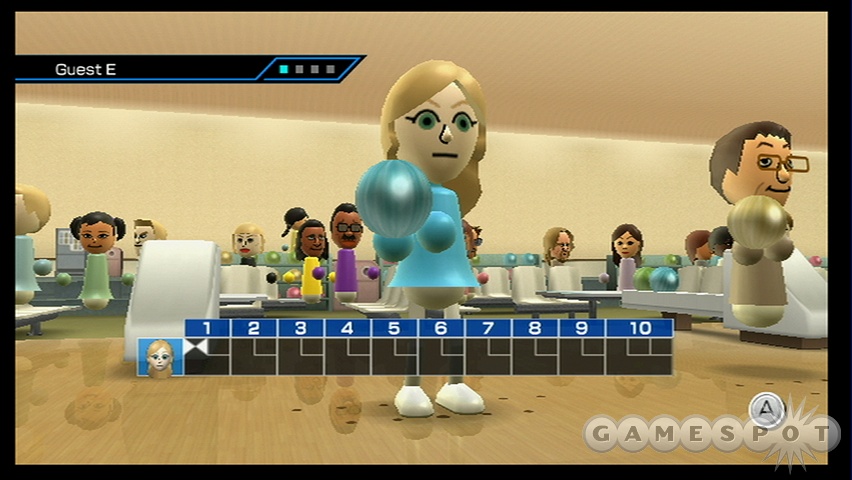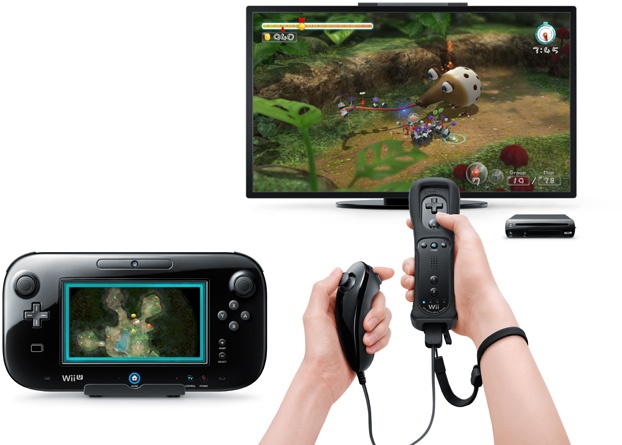Nintendo, Social Gaming, and Why I Quit My Job
Truly social gaming isn't just clicking on stuff and broadcasting it to a list of acquaintances online; it's sharing experiences together in the same room. Nintendo gets this in ways that others do not.
Just five short years ago, when people talked about making games more "social" it usually meant gathering people around the TV in the living room and playing games together. Not clicking on coin icons that appear above simulated cities/farms/restaurants/space stations/petting zoos and badgering your friends to send you gems/coins/mana/vegetables. Being "social" meant being with other people and interacting, not simply broadcasting events at a collection of meaningless names on a list and begging for equally meaningless stuff in return.
Though E3 was far from an impressive event in 2007, the games on show were significant because they took the whole market down a new path. Though core games were still very well represented, something exciting was happening: the games industry was remembering its roots and acknowledging that games were at their very best when shared.
That summer I came away from E3 so impressed by the direction that video games were taking that I quit my job running a bunch of magazines and websites focused on core gamers.
In fact, that summer I came away from E3 so impressed by the direction that video games were taking that I quit my job running a bunch of magazines and websites focused on core gamers. Was I bonkers? Possibly. As the father of a young family (I have two boys, both under 10), I'd started to look at my passion in a very different light. I'd become acutely aware of my view of the gaming world shifting, and it just happened to have been evolving alongside an enormous shift in the way that developers and publishers were thinking about their audience. I grew up loving games, and wanting to be a part of the way that people learn about them. Now that I was at a new point in my own life, I wanted to help the new, emerging audience--people with families that knew they needed to be more engaged with this cool form of entertainment, but had no idea where to start. As is often the case in a young industry, many of us involved were starting to have similar life experiences. Much of the creative talent was at a similar point in their own lives, and they wanted the opportunity to make games that they could share with their new families, and subsequently with a growing audience of similar young moms and dads.

So what did I do? With a small team of like-minded individuals, and with a phenomenal business partner, I somehow convinced an investor to put up a big fat wad of cash and started a video game website aimed at families called What They Play. Some of you may remember it, but many of you will not because you had absolutely no need for it. It was intended to educate moms and dads about the games that their kids were asking about. I'd link to it, but sadly it is no longer online. Long story. Anyway, the point is that not so very long ago, the whole industry was talking about "expanding the audience" and "reaching out to families" while "bringing games out of the basement and into the living room." After being ghettoized as being for "the hardcore" for so long, games were now… whatever the opposite of ghettoized is. Gentrified? Gamers were no longer characterized as overweight, basement-dwelling, Dorito-crunching mouth-breathers, but doting dads and gorgeous Lululemon-clad moms surrounded by broods of children who used video games to enrich their lives.
At E3 2007, Nintendo led the charge down this path. It unveiled Wii Fit and the Balance Board, it showed Mario Kart Wii with the wheel peripheral (which many of us sneered at, not realizing it was genius considering the audience Nintendo was targeting), and it showcased "new kinds of experiences" on the DS like Brain Age and My Word Coach that were foolishly dismissed as "non-games" by many. These all went on to sell hojillions of copies and expand the reach of the DS and the Wii beyond archetypal "gamers." Even your mom was playing games on the DS back then. Probably.
It was the dawn of a new age. A true maturation of gaming. So what the hell happened? Sure, smartphone and browser games have had a big impact on who is playing what and where, but what happened in the living room?
Fast-forward to 2012, and E3 for the most part was a callous display of brutality focused squarely on attempting to attract aggressive, young, male, core gamers with the assumption that they want nothing other than to kill things.
Fast-forward to 2012, and E3 for the most part was a callous display of brutality focused squarely on attempting to attract aggressive, young, male, core gamers with the assumption that they want nothing other than to kill things. There were notable exceptions, of course, but there was a lot of violence, and hardly any company was choosing to hang its hat on anything other than this kind of action.
Only one company at E3 2012 still talked about "social" as something requiring physical proximity: Nintendo. While Wii U games weren't particularly impressive visually, many of them were very interesting physically. At a time when every bleak, brown-hued, gritty, throat-punching, M-rated action game is boasting online multiplayer whether it really warrants it or not, the Wii U gave us the tiniest glimpse at something that I really hope becomes a thing: existential gameplay.
That may sound like a grandiose label to give something so simple, but I think it's an important trend that needs to be embraced by game designers in a variety of forms, but thankfully the Wii U gamepad has the potential to act as a convenient focal point.

At best, the majority of same-screen co-op game experiences tend to require the same behavior from everyone playing. We compete, we race, we fight, we shoot. With the Wii U gamepad in the mix, an additional element is added: external influence. One of the players can impact the game in unexpected ways and change the overall experience. Not only that, but possession of that controller becomes part of the fun too. The players need to acknowledge a social dynamic that exists outside of the primary game experience and are free to make an additional game out of who "deserves" that control along with the ability to disrupt the normal flow. Do you pass it around? Take it in turns? Give it to whoever "wins" or "loses" a level? This requires a level of trust in the players that video games have increasingly moved away from over the course of the past 20 years.
Hopefully what we're starting to see now is a glimpse at the future and that the true meaning of "next generation" when it is inevitably unveiled next year will be far more than just more impressively bleak, brown-hued, gritty, throat-punching, M-rated action games. Instead, let's hope for a next generation of "social" gaming that acknowledges the fun that we have when we are truly together.
Would I quit my job again, based on what was shown this year? Well, no--but it's clear that we're fast approaching a crossroads, and I hope that console games start to chase broader audiences again and don't simply cede that ground to the browser and the smartphone.
'Got a news tip or want to contact us directly? Email news@gamespot.com
Join the conversation